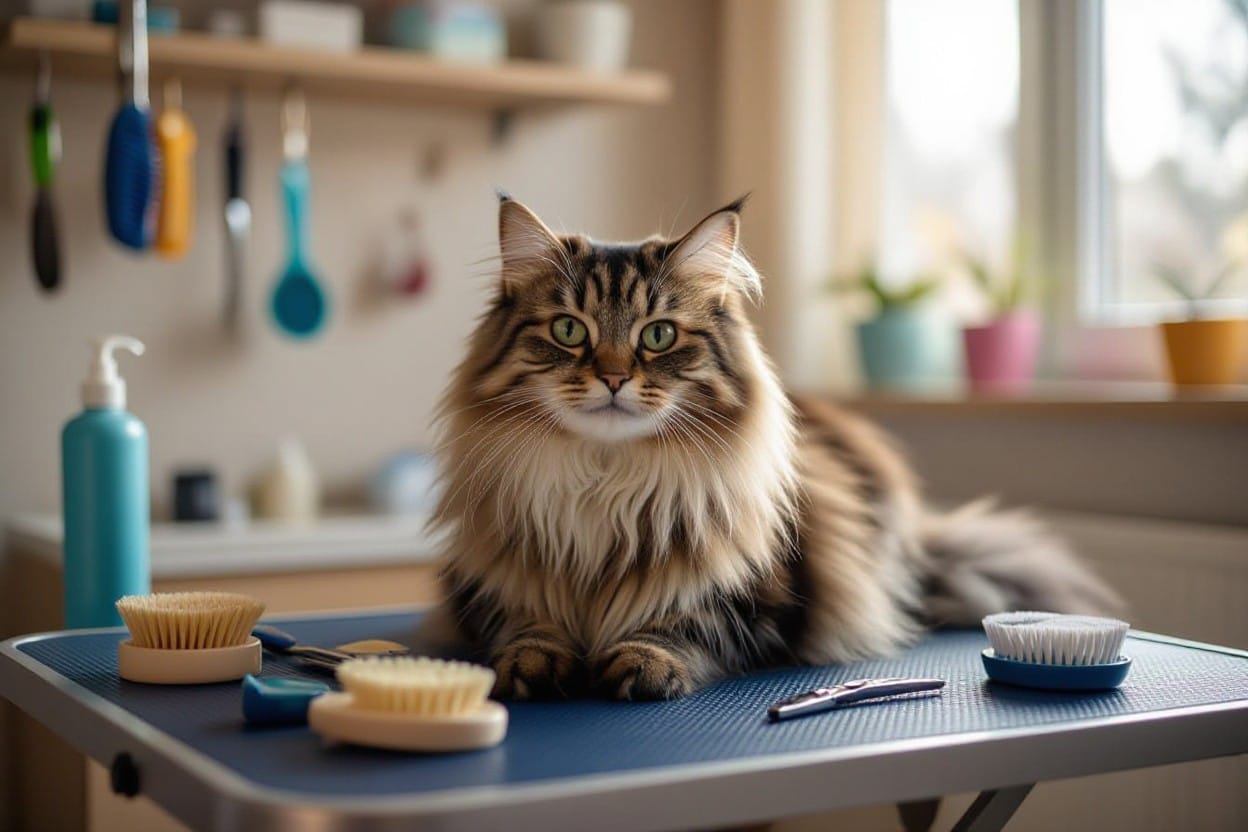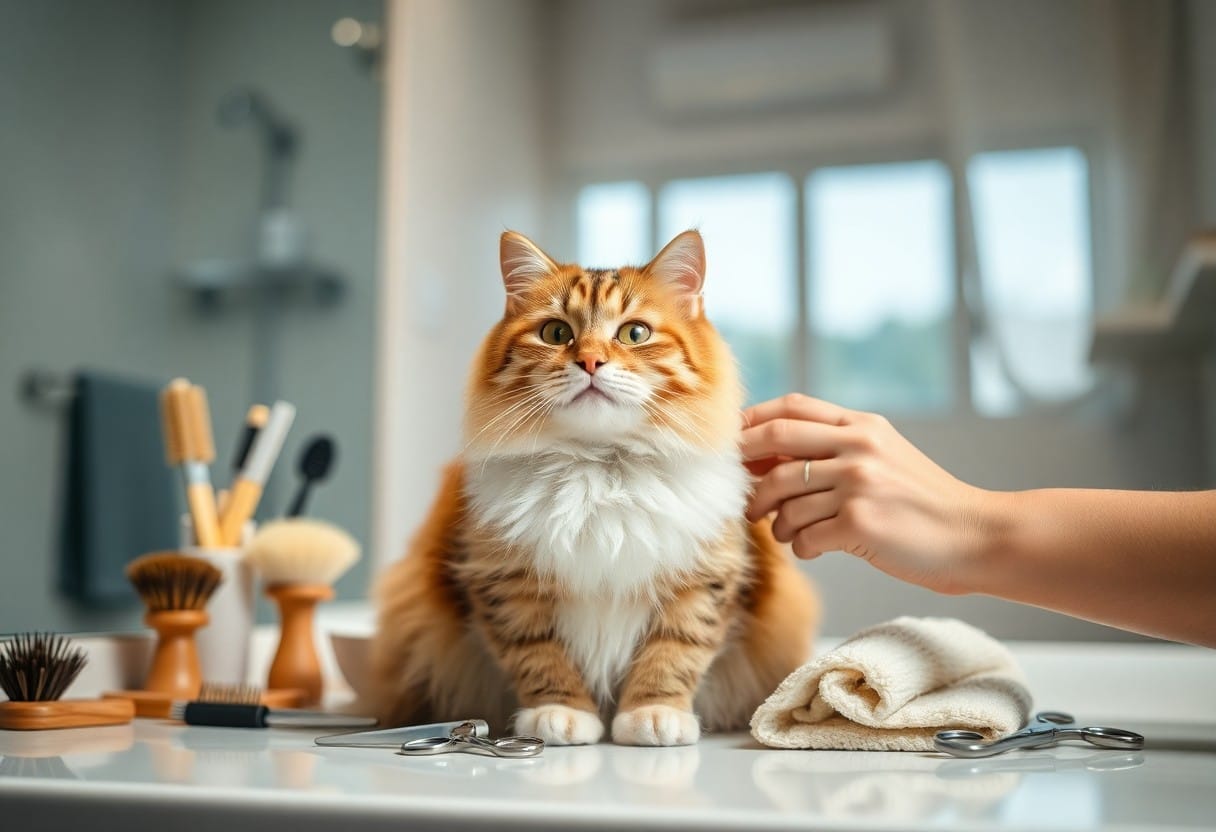With their keen sense of hearing, cats rely heavily on their ears to navigate their surroundings and communicate with their environment. Regular ear cleaning is a crucial aspect of feline grooming that often gets overlooked by cat owners. Keeping your cat’s ears clean not only helps prevent ear infections and other complications but also ensures their overall well-being.
Cats are susceptible to wax build-up, dirt, mites, and other debris in their ears, which can lead to discomfort and potential health issues if left unattended. By incorporating regular ear cleaning into your cat’s grooming routine, you can enhance their quality of life and reduce the risk of developing painful ear problems. Understanding the significance of maintaining your cat’s ear hygiene is vital for every responsible cat owner.
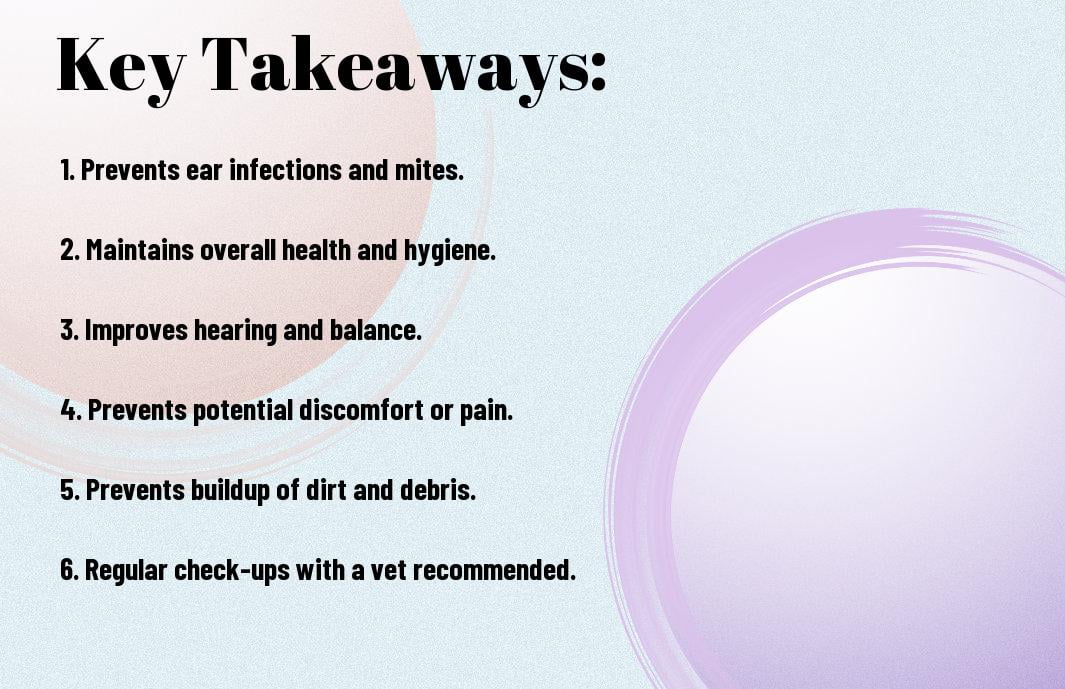
Anatomy of a Cat’s Ear
External Anatomy and Function
Now, let’s research into the external anatomy and function of a cat’s ear. A cat’s ear is made up of three main parts: the outer ear, the middle ear, and the inner ear. The outer ear consists of the ear flap (pinna) and the ear canal. The ear flap helps direct sound into the ear canal, which is lined with hair and wax-producing glands to protect the ear from debris and foreign objects.
Internal Anatomy and Function
To understand the internal anatomy and function of a cat’s ear, we need to look deeper. The middle ear contains the eardrum (tympanic membrane), which separates the outer and middle ear. It also houses tiny bones that transmit sound vibrations to the inner ear. The inner ear is where sound is converted into nerve signals that are sent to the brain for interpretation.
Anatomy. The inner ear is a complex system of fluid-filled canals and sensory cells that aid in balance and spatial orientation. These structures are crucial for a cat’s coordination and ability to move gracefully.
Function. The ear plays a vital role in a cat’s sensory perception and communication with the environment. Regular ear cleaning is imperative to prevent wax buildup and infections that can affect a cat’s hearing and overall well-being.
Recognizing Ear Problems in Cats
Little can be as distressing for cat owners as noticing their feline friend experiencing discomfort due to ear problems. Cats are prone to various ear issues that can cause pain, irritation, and even affect their balance and hearing. It is important for cat owners to be aware of the signs of ear problems so they can address them promptly and seek appropriate veterinary care.
Common Ear Issues and Infections
Infections are one of the most common ear problems seen in cats. Felines are susceptible to bacterial, yeast, and fungal infections in their ears, which can occur due to various factors such as ear mites, allergies, or foreign objects in the ear canal. Symptoms of ear infections in cats may include redness, swelling, discharge, odor, and scratching or rubbing of the ears.
Signs and Symptoms Your Cat May Need an Ear Cleaning
Your cat may need an ear cleaning if you notice them excessively shaking their head, pawing at their ears, or tilting their head to one side. Other signs that may indicate a need for ear cleaning include a buildup of wax or debris in the ear canal, a foul odor coming from the ears, or redness and inflammation in the ear area.
The health of a cat’s ears is crucial for their overall well-being, as untreated ear problems can lead to pain, discomfort, and potential hearing loss. Regularly monitoring your cat’s ears and being vigilant for any signs of infection or irritation is important in maintaining their ear health.
The Benefits of Regular Ear Cleaning
Preventing Infections and Complications
For cats, regular ear cleaning can prevent a myriad of infections and complications that may arise from neglecting this aspect of their grooming routine. By regularly cleaning your cat’s ears, you can remove dirt, wax buildup, and debris that can harbor bacteria and yeast, leading to infections. Ear infections can be painful for cats and, if left untreated, can result in more serious health issues.
Enhancing Overall Health and Comfort
Regular ear cleaning not only prevents infections but also enhances your cat’s overall health and comfort. Clean ears can improve your cat’s hearing, balance, and overall well-being. Additionally, by maintaining clean ears, you can detect any abnormalities or signs of ear issues early on, allowing for prompt veterinary intervention if necessary.
For instance, a foul odor, excessive wax buildup, redness, swelling, or discharge may indicate an underlying ear problem that needs attention. By establishing a regular ear cleaning routine, you can monitor your cat’s ear health and address any issues before they escalate.
How Often Should You Clean Your Cat’s Ears?
Factors Influencing Cleaning Frequency
Not all cats need their ears cleaned as frequently as others. The frequency of ear cleaning for your cat can depend on various factors:
- Breed of the cat
- Outdoor exposure
- Medical conditions
The proper examination and evaluation of these factors can help determine how often you should clean your cat’s ears.
Scheduling and Maintaining a Routine
Routine ear cleaning is imperative to prevent ear infections and maintain your cat’s overall health. The cleaning frequency for your cat should be determined based on the factors mentioned above.
Make sure to schedule regular ear cleaning sessions and stick to them. Consistency is key in maintaining your cat’s ear health. Your veterinarian can guide you on setting up an appropriate ear cleaning routine based on your cat’s specific needs.
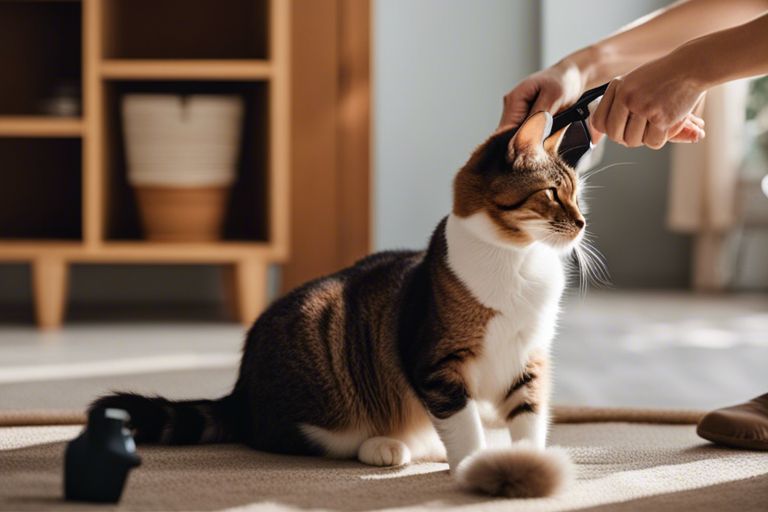
The Proper Way to Clean a Cat’s Ears
Preparation and Safety Tips
Once again, proper ear cleaning is imperative for maintaining your cat’s health and well-being. Before you begin the process, it is crucial to gather all the necessary supplies, including cat-safe ear cleaning solution, cotton balls or pads, and treats to reward your cat afterward. Additionally, make sure to choose a quiet and comfortable location for the cleaning session to reduce stress for your feline friend.
- Avoid using Q-tips or sharp objects that can potentially harm your cat’s delicate ear canal.
- If your cat shows signs of discomfort or pain during the cleaning process, stop immediately and consult your veterinarian.
- Be gentle and patient throughout the entire procedure to build trust with your cat and make the experience more pleasant for them.
After you have completed the ear cleaning, reward your cat with some treats and praise to reinforce positive behavior.
Step-by-Step Guide to Effective Ear Cleaning
| Step 1: | Inspect the Ears |
| Gently hold your cat and examine the ears for any redness, swelling, discharge, or odor. | If you notice any abnormalities, consult your veterinarian before proceeding with the cleaning. |
| Step 2: | Apply Ear Cleaning Solution |
| Properly secure your cat and apply a few drops of the ear cleaning solution into the ear canal. | Massage the base of the ear gently to help dislodge any dirt or debris. |
Another important aspect of cleaning your cat’s ears is to ensure that you are using a vet-approved ear cleaning solution specifically designed for cats. Avoid using homemade remedies or human ear cleaning products as they may cause irritation or harm to your cat’s ears. Always follow the instructions provided on the product label and consult your veterinarian if you have any concerns about the cleaning process.
Choosing the Right Ear Cleaning Supplies
Safe and Effective Ear Cleaning Solutions
For optimal feline ear health, it is crucial to carefully select safe and effective ear cleaning solutions. Look for products that are specifically formulated for cats, as human ear cleaners can be too harsh for their delicate ears. Avoid solutions that contain alcohol or hydrogen peroxide, as these can irritate the sensitive skin inside the ear canal. Opt for gentle, veterinarian-recommended cleansers that help dissolve wax and debris without causing discomfort to your cat.
Tools of the Trade: Swabs, Wipes, and Drops
In the matter of cleaning your cat’s ears, having the right tools is necessary. Swabs, wipes, and drops are commonly used for this purpose. Ear cleaning wipes are convenient for quick clean-ups, while drops can help soften and loosen debris for easier removal. Be sure to use only cat-specific products to avoid any adverse reactions. Swabs should only be used on the outer areas of the ear and never inserted into the ear canal to prevent injury to the delicate structures inside.
Cleaning your cat’s ears can be a delicate process, but with the right tools and technique, you can help prevent ear infections and other issues. Regular cleaning, especially for cats prone to wax buildup, can improve their overall ear health and comfort. If in doubt, consult your veterinarian for guidance on the best ear cleaning supplies and methods for your feline friend.
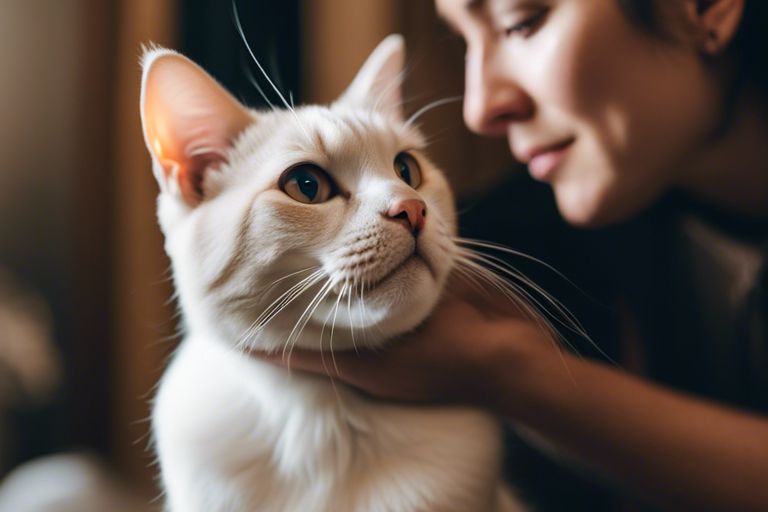
Professional Care and When to See a Vet
Keep in mind that while regular at-home ear cleaning is important for your cat’s ear health, there are limitations to what you can achieve on your own. Some cats may have underlying ear issues that require professional care. If you notice persistent redness, swelling, discharge, a foul odor, or if your cat seems to be in discomfort during cleaning, it’s time to seek veterinary help.
Limitations of Home Ear Cleaning
Professional ear cleaning may be necessary for cats with excessive wax buildup, ear mites, infections, or other issues that cannot be resolved with at-home methods. Veterinarians have the expertise and tools to thoroughly examine your cat’s ears, make an accurate diagnosis, and provide appropriate treatment.
Indications for Professional Cleaning and Medical Attention
Medical attention should be sought if you notice any of the following signs: persistent scratching or rubbing of the ears, head shaking, redness or swelling of the ear canal, discharge or odor from the ears, sensitivity to touch near the ears, or any changes in your cat’s behavior such as increased irritability or lethargy.
Professional care may also be necessary if your cat has a history of ear problems, if they resist or become agitated during at-home cleanings, or if you are unsure of the proper ear cleaning techniques.
Recap of Key Points
Points to remember include the importance of regular ear cleaning to prevent issues, the limitations of at-home cleaning, the signs that indicate the need for professional care, and the significance of seeking veterinary attention when necessary.
The Long-Term Impact of Maintaining Ear Hygiene in Cats
On a long-term basis, diligent ear care can help prevent chronic ear infections, reduce the risk of hearing loss, and enhance your cat’s overall quality of life. By staying proactive about your cat’s ear health, you can ensure they remain comfortable and happy for years to come.
FAQ
Q: Why is regular ear cleaning important for cats?
A: Regular ear cleaning is important for cats because it helps prevent ear infections, removes excess wax and debris, and allows for early detection of any potential ear issues.
Q: How often should I clean my cat’s ears?
A: It is recommended to clean your cat’s ears at least once a month, or more frequently if your cat is prone to ear issues or has a build-up of wax.
Q: What is the best way to clean a cat’s ears?
A: The best way to clean a cat’s ears is to use a vet-approved ear cleaner solution and gently wipe the outer part of the ear with a cotton ball or pad. Avoid using cotton swabs or inserting anything into the ear canal.
Q: What are the signs of an ear infection in cats?
A: Signs of an ear infection in cats may include shaking or tilting of the head, scratching or pawing at the ears, redness or swelling of the ear canal, odor or discharge from the ear, and sensitivity to touch around the ear.
Q: When should I consult a veterinarian about my cat’s ears?
A: You should consult a veterinarian if you notice any signs of an ear infection, if your cat is in discomfort, if there is an unusual odor or discharge from the ear, or if you are unsure about how to properly clean your cat’s ears.



